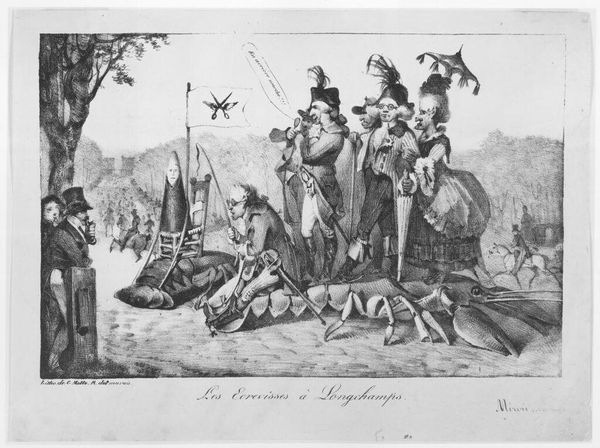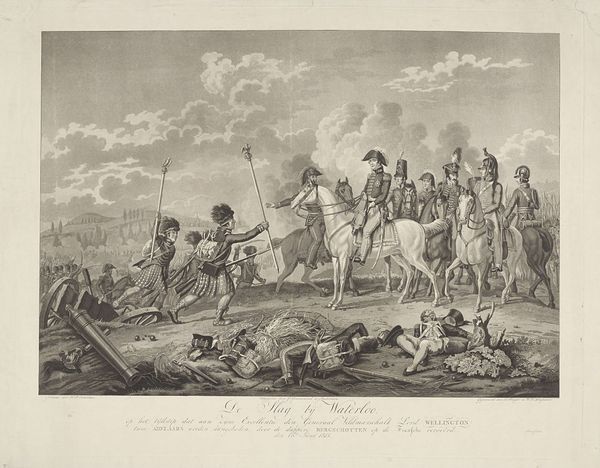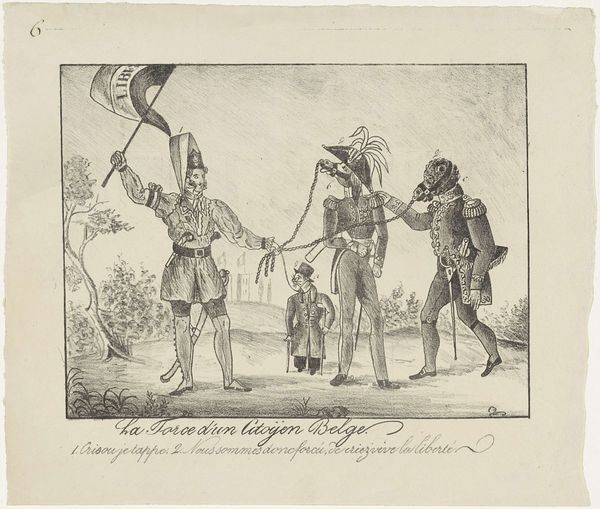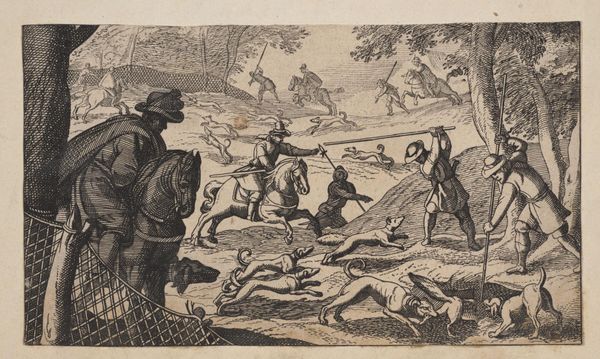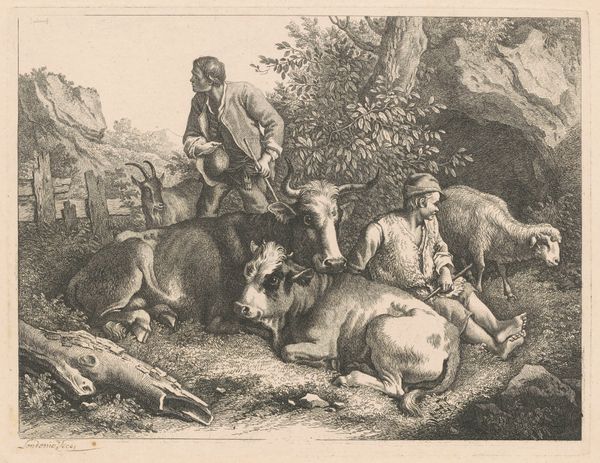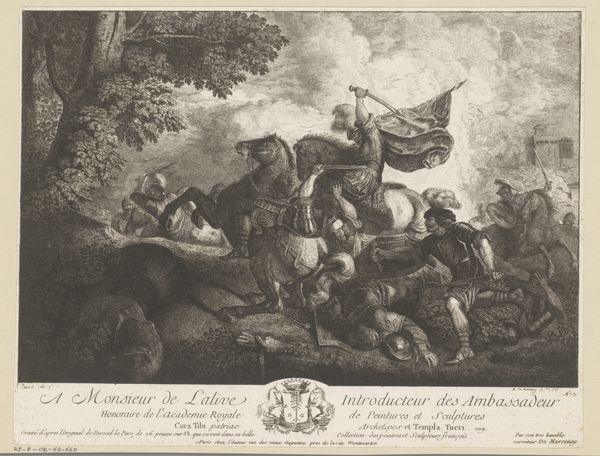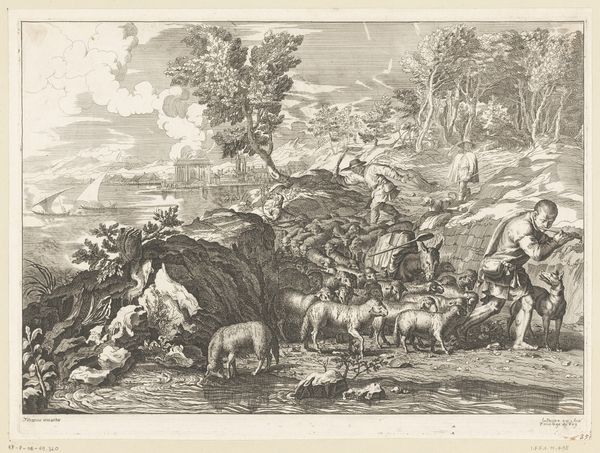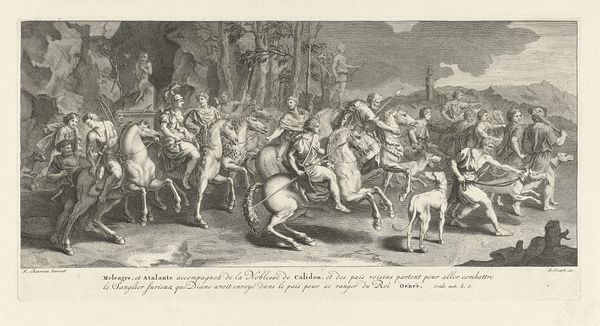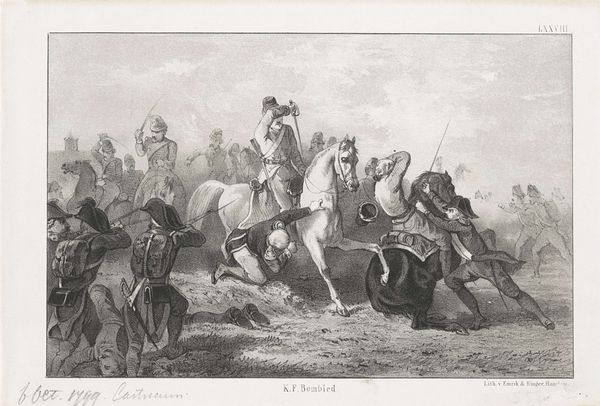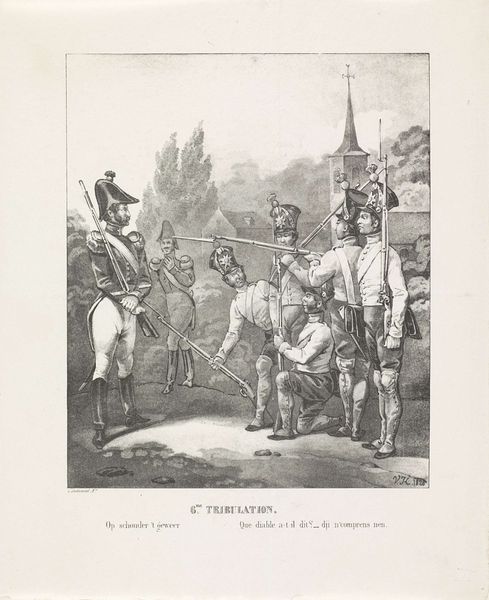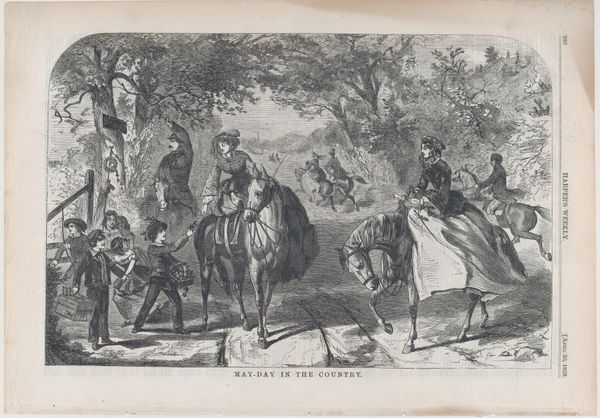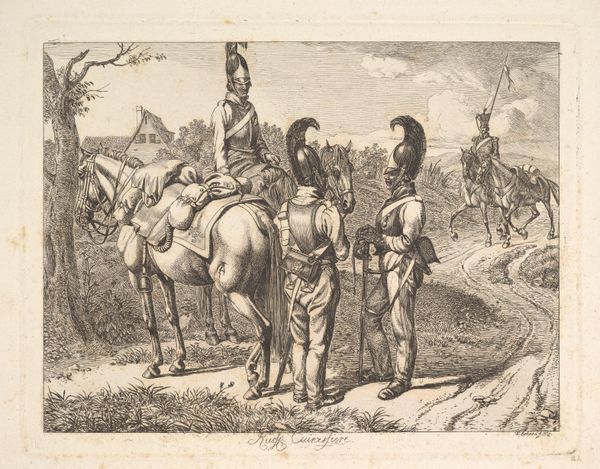
drawing, print, etching
#
tree
#
drawing
# print
#
etching
#
caricature
#
landscape
#
pencil drawing
#
romanticism
#
genre-painting
#
history-painting
Dimensions: Sheet: 8 7/16 x 12 1/8 in. (21.5 x 30.8 cm)
Copyright: Public Domain
Curator: Delacroix created this satirical print, "The Crayfish at Longchamps," around 1822. The print work, rendered in etching, is now part of the Metropolitan Museum of Art's collection. Editor: Well, that is… curious. The first thing that strikes me is how top-heavy everything looks. There’s a mass of elaborately dressed figures precariously balanced on, of all things, a giant crayfish. The mood is farcical, almost surreal. Curator: The image functions as social commentary on the aristocracy of the time. Note the careful detail Delacroix gives to the attire and the rather grotesque, exaggerated features of each person riding the crayfish. It’s quite intentional. Editor: Yes, those costumes and hairstyles… exaggerated to the point of absurdity! And what's with the crayfish itself? It's a strange, almost comical, beast of burden for these elite figures. Do you think it symbolizes something specific about their wealth, perhaps its instability? Curator: It could represent the backwardness of their ideas, the slowness to adapt to the changing world after the Napoleonic era, or perhaps even the literal cost—the heavy financial burden placed on society by the privileged. Editor: Looking closely, I see little details—the crossed scissors on the flag, which must be loaded with symbolism, or the seated, masked figure who almost blends into a chair and the fishing pole attached to it. Curator: Right. These objects point towards hidden, subtle themes and messages Delacroix embeds within the satirical cartoon: vanity, artifice, and perhaps the illusion of control that the upper class tries to exude, all grounded in very real power dynamics within society. Editor: The figures really are teetering precariously! It seems that their social and financial privilege is not so secure. Curator: Ultimately, "The Crayfish at Longchamps" provides us insight into the economic and political turmoil within France that shaped the Romanticism style, using absurdity and social satire to expose power structures of the era. Editor: Seeing all those embedded signs and references opens up a whole world of thought for this unusual tableau! The comical effect really belies some cutting commentary about the French aristocracy.
Comments
No comments
Be the first to comment and join the conversation on the ultimate creative platform.
